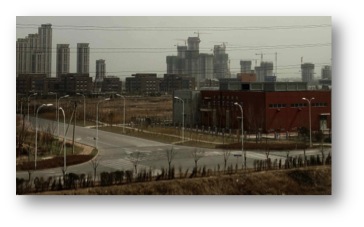There’s smoke and there’s children burning their fingers on the cashews they pluck from the fire.
The boatman wants us to hire him, says the Swahili-speaker among us, but first this boatman is searching for wood for a new tiller. The Swahili-speaker also says not to try for the cashews in the fire ourselves. Papayas will fall, we’ll whack them down with sticks, he says. Let the children have the nuts.








 We took the fast train to Beijing across hours of deadened countryside where all the trees grow in rows, various heights, but all new and emaciated under the dusting of early leaves. I asked an acquaintance what happened to all the old trees. Was this a result of the Cultural Revolution? He said, maybe they ate them. They ate grass sometimes. Maybe they cut them down for firewood. Now and then you see some that don’t look planted; volunteers, they had been fattened up by age and randomly placed. There are always survivors.
We took the fast train to Beijing across hours of deadened countryside where all the trees grow in rows, various heights, but all new and emaciated under the dusting of early leaves. I asked an acquaintance what happened to all the old trees. Was this a result of the Cultural Revolution? He said, maybe they ate them. They ate grass sometimes. Maybe they cut them down for firewood. Now and then you see some that don’t look planted; volunteers, they had been fattened up by age and randomly placed. There are always survivors.

